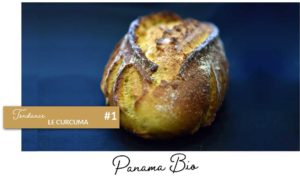Used since ancient times in Asia, turmeric refers to the rhizomes of the perennial plant and the spice ground from the branches. The ideal altitude for growing the turmeric rhizome is between 400 and 1,000 metres. For this plant originally from India, the soil must be clay-based, damp and the ambient temperature between 30 and 35°C. On average, it takes seven months after planting for the shoots to be ready to be boiled, dried then ground into turmeric powder, the most familiar form for this spice.
Turmeric is at the heart of Indian culture and cuisine. Its saffron flavours make it a particularly interesting ingredient for dishes and it is the main ingredient in curries. Its pretty yellow colour means it can be used as a natural colouring, pigment or dye, and in cosmetics too. For Hindus, this spice is also very important during their religious rites and for births and marriages in particular as it is a sign of a promising future.
For centuries, turmeric has been used as an essential element in traditional Indian medicine. It is known for easing inflammatory issues, facilitating digestion, stimulating the liver and pancreas and for its antioxidant properties. Eating turmeric regularly can even reduce the risk of cardiovascular diseases and cancers and improve the cognitive decline caused by Alzheimer’s disease. Scientific studies have been carried out to improve our knowledge of this incredible little plant and its medicinal properties. It it is strongly recommended to use pepper in combination with turmeric as it enables better assimilation of curcumin in the body, the main active ingredient in turmeric.
Basically, to enjoy the benefits of this super natural medicine, you can eat it in all its forms which include powder, infusion, essential oil, detox drink or in its original form: fresh turmeric rhizome.
In cooking, smell, sight and taste are the most important senses. Whether your breads are baguettes or batards, turmeric should take your customers on a journey of the senses. For example : Organic Panama bread, a subtle blend of organic wheat flour, cornflour, sunflower seeds and turmeric that creates a crisp crust and a soft, golden yellow crumb.



